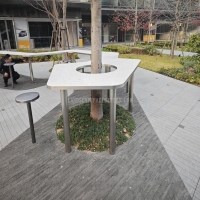Welcome to the website for landscape facilities products and knowledge.
How does the table’s design accommodate the need for quick and easy integration of technology upgrades?
In today's rapidly evolving technological landscape, modern table designs have transformed into sophisticated integration platforms that anticipate and accommodate future upgrades. The most forward-thinking tables feature modular components that allow for effortless replacement of outdated technological elements. These designs incorporate accessible raceways and removable panels that provide direct pathways for cable management and component swaps without requiring complete table disassembly.
Smart tables now include integrated power distribution units with standardized connections that support various international plug types and voltage requirements. The inclusion of universal docking stations and wireless charging surfaces eliminates the need for proprietary connectors that might become obsolete. Many premium tables feature tool-free access panels that permit IT staff to upgrade connectivity ports, add new modules, or replace existing technology within minutes rather than hours.
Advanced cable management systems represent another critical innovation, with designated channels separating power, data, and audiovisual cables to prevent interference while maintaining organization. These systems often include service loops that provide extra cable length for future repositioning of ports or the addition of new connection types. Some manufacturers have developed tables with overhead cable bridges and under-table troughs that keep wires completely hidden yet instantly accessible.
The integration of technology-ready structural elements ensures tables remain relevant through multiple upgrade cycles. Reinforcement points strategically placed within table frames provide anchor positions for monitor arms, conferencing equipment, and other accessories that may be added later. Materials selected for high-wear areas around technology integration points are specifically chosen for durability and ease of replacement when necessary.
Perhaps most importantly, manufacturers now design tables with standardized cutouts and mounting systems that accommodate equipment from multiple technology providers. This vendor-agnostic approach prevents organizations from being locked into specific brands and enables seamless technology refreshes. As workplace technology continues to evolve, these design principles ensure that furniture investments remain functional and current despite the constant pace of technological change.
Related search:

Recommendation
An outdoor bar counter with stainless steel and terrazzo materials in an irregular shape